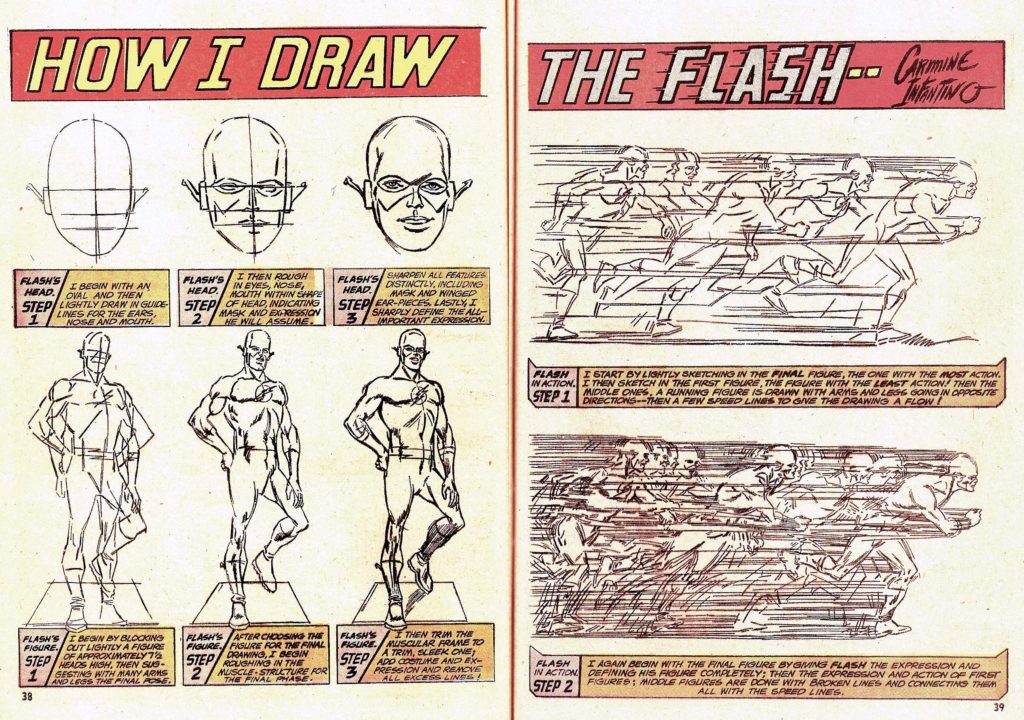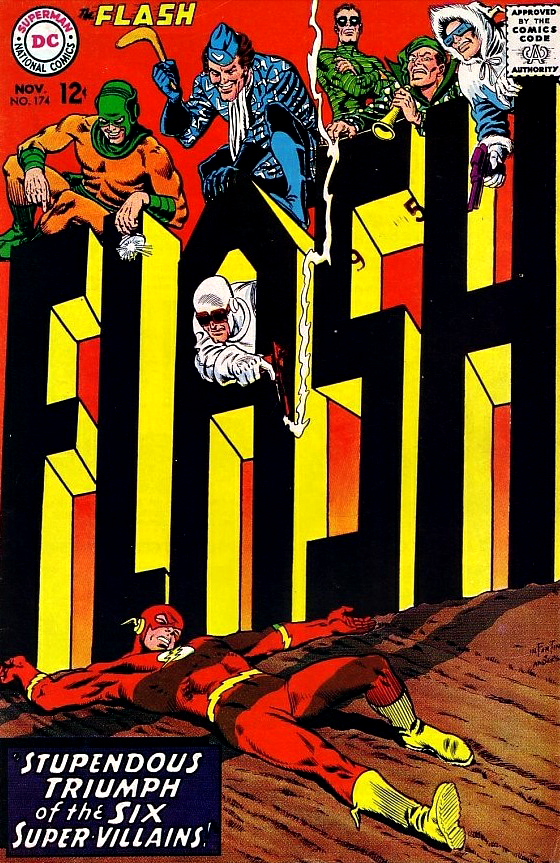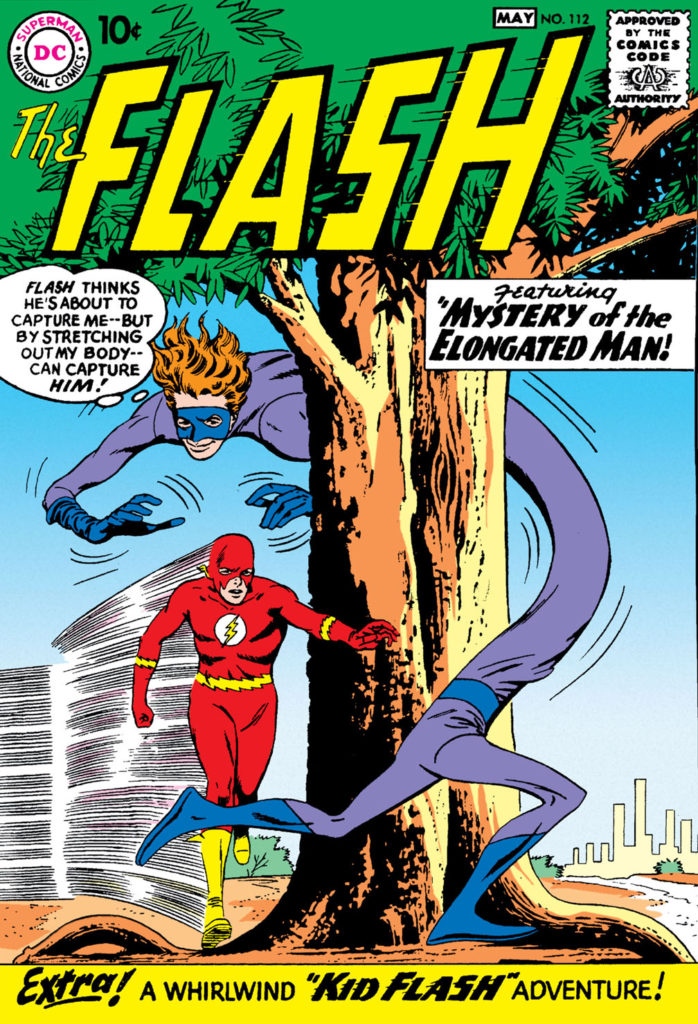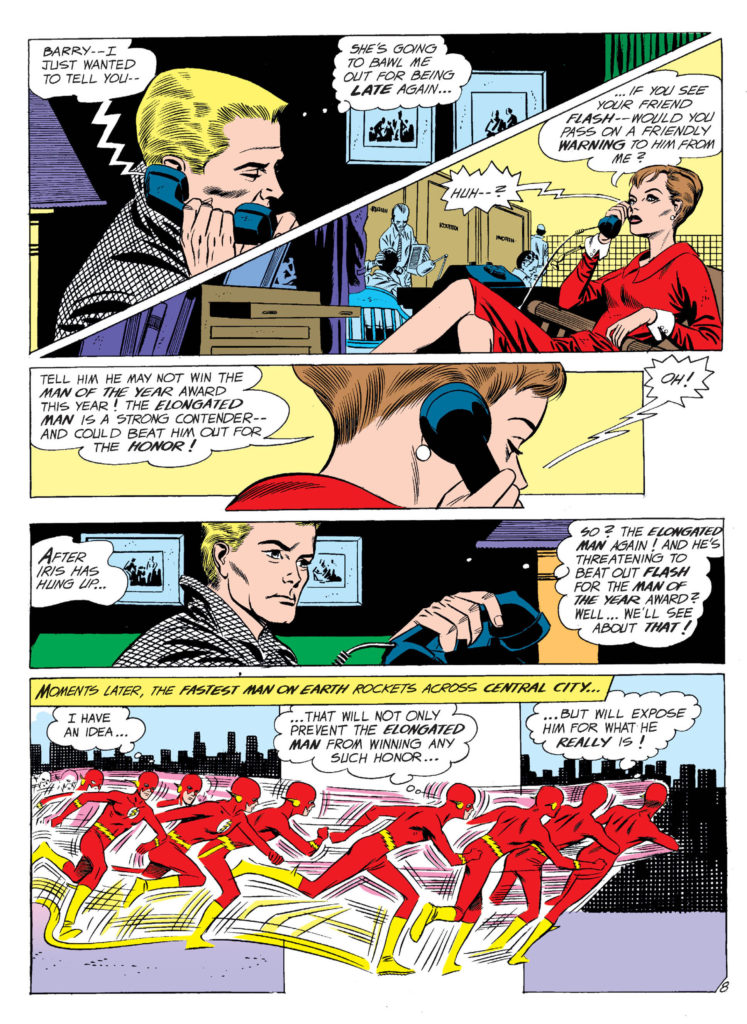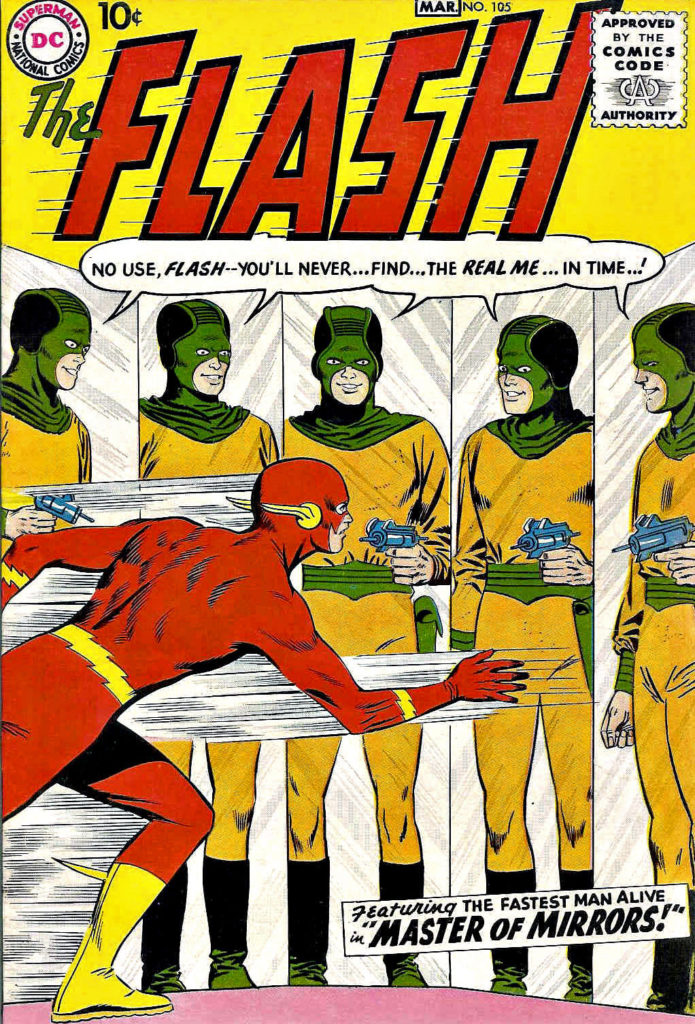Flash #112, May 1960
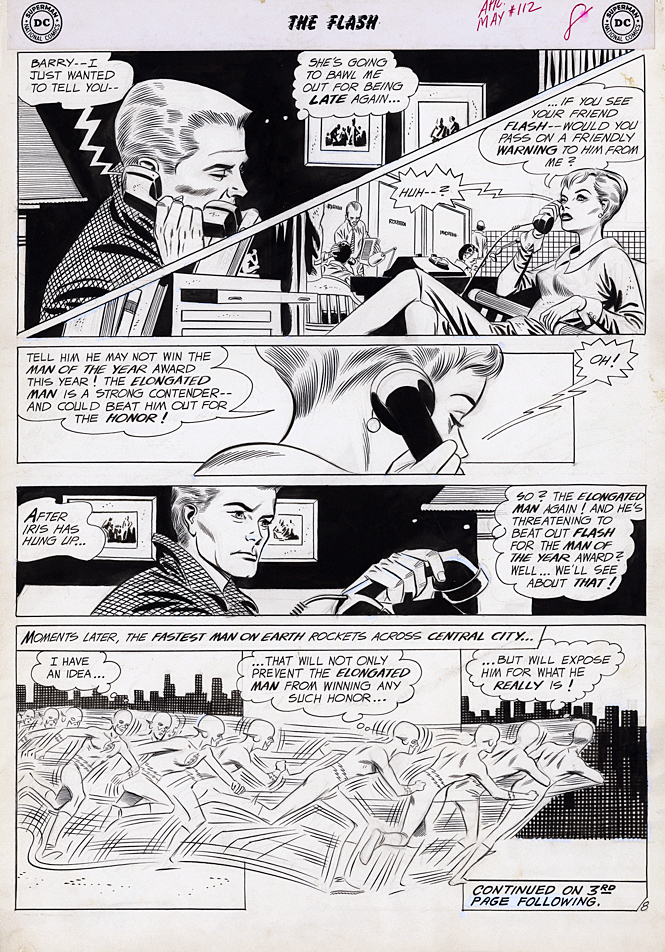
The Flash returns to THE CW shortly for its sixth TV season, so the Scarlett Speedster receives his own multi-part blog series this week.
Some of the most talented superhero storytellers in comics couldn’t figure out what to do with the narrative and exposition elements that move the story along when no one is wearing spandex or a cape.
Many comics were once filled with pages and pages of standard medium-angle shots of talking heads. Six panels per page. Rinse. Repeat.
Not Carmine Infantino’s pages. His innovative sense of panel composition and design, and use of varying and dynamic camera angles, made the “yada yada” part of the story much more engaging than most of his peers.
In this very early Flash story from issue #112 (inks by Joe Giella) he even manages to innovate a phone call. We take narrow “widescreen” (horizontal) panel layouts for granted now, but in 1960? Not so much. A page design like this is revolutionary 60 years ago.
Of course, superhero comics are ultimately about conflict and action, and re-reading these early Flash stories, his innovative style really jumps out. Those crazy speed lines that help give the illusion of 3D motion in a 2D medium. That sleek space age costume… designed before the space age really began.
And those amazing covers? Carmine gave up pencilling The Flash when he was promoted to DC’s art director. His cover on the final full issue of his 11-year run as Flash artist blew my mind as a kid in 1967 — and still does today.
What else would you expect from the designer of the Silver Age of Comics?
